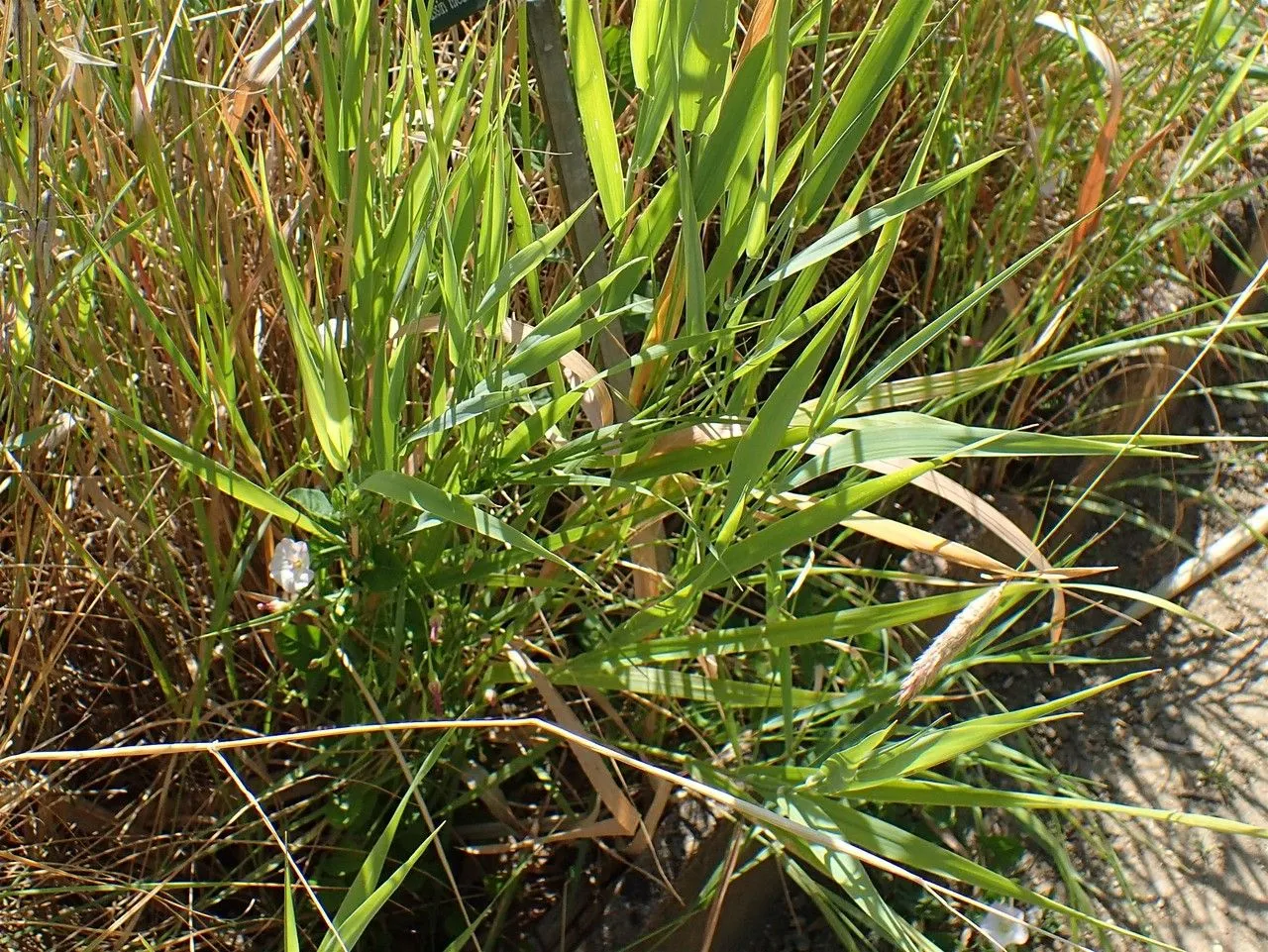
Author: Desf.
Bibliography: Fl. Atlant. 1: 56 (1798)
Year: 1798
Status: accepted
Rank: species
Genus: Phalaris
Vegetable: False
Observations: Macaronesia, Medit.
Sunol grass, scientifically known as “Phalaris coerulescens,” is a noteworthy member of the Poaceae family, which encompasses a wide range of grasses vital to ecosystems and agriculture. This particular grass species was first described in 1798, as noted in the publication “Fl. Atlant.” volume one on page 56, by the authoritative botanist Desfontaines.
Originating from the diverse and ecologically rich regions of Macaronesia and the Mediterranean, Sunol grass thrives in climates that offer mild winters and warm, dry summers. Its adaptability to such environments makes it a valuable species in these areas, contributing to the local grassland biomes.
Phalaris coerulescens is characterized by its resilient nature and capacity to grow in varying soil conditions, often preferring well-drained soils. This grass has a robust structure with a dense root system that helps prevent soil erosion, making it an ecological asset for maintaining soil health and stability. Moreover, it plays a part in the local food web, providing habitat and nourishment for a variety of insects and small animals.
Its botanical characteristics include slender, erect culms that can reach considerable heights, along with elongated leaves that are often tinged with a subtle blue-green hue, a trait referenced by its Latin species name “coerulescens.” The inflorescence of Sunol grass is typically a compact, spike-like panicle which aids in effective seed dispersal.
In summary, Sunol grass is a distinguished species within the Poaceae family, reflecting attributes of ecological resilience and adaptability. Recognized since the late 18th century, it continues to play a significant role in the habitats of Macaronesia and the Mediterranean, underpinning the health of these regions’ grassland ecosystems.
Deu: bläuliches glanzgras
Eng: sunolgrass, blue canary grass, sunol grass
Dan: violet glansfrø
Swe: blåflen
En: Sunol grass, Blue Canary grass, Sunolgrass
Ar: خرفار مزرق
Da: Violet glansfrø
Fi: Välimerenhelpi
Fr: Alpiste bleuâtre
De: Bläuliches Glanzgras
It: Scagliola cangiante
Sv: Blåflen
Taken Jun 17, 2022 by Bakschik Bianka (cc-by-sa)
Taken Mar 25, 2020 by Dell’Erba Laura (cc-by-sa)
Taken Apr 18, 2020 by Jan Van den Bossche (cc-by-sa)
Taken Feb 10, 2020 by Billiot Alli (cc-by-sa)
Taken Apr 13, 2020 by Kim Maya Sutton (cc-by-sa)
Taken May 15, 2017 by Photoflora – Benoit BOCK (©)
Taken May 15, 2006 by Photoflora – Jean-Luc TASSET (©)
Taken Jun 18, 2017 by Yoan MARTIN (cc-by-sa)
Taken Jun 18, 2017 by Yoan MARTIN (cc-by-sa)
Taken Jun 18, 2017 by Yoan MARTIN (cc-by-sa)
Taken May 15, 2006 by Photoflora – Benoit BOCK (©)
Taken May 10, 2011 by Tela Botanica − Bertrand BUI (cc-by-sa)
Taken May 15, 2017 by Photoflora – Benoit BOCK (©)
Taken May 13, 2004 by Tela Botanica − Liliane Roubaudi (cc-by-sa)
Taken Jun 18, 2017 by Yoan MARTIN (cc-by-sa)
Taken May 10, 2022 by Monteiro Henrique (cc-by-sa)
Taken Jun 18, 2017 by Yoan MARTIN (cc-by-sa)
Taken Jun 18, 2017 by Yoan MARTIN (cc-by-sa)
Taken Jun 18, 2017 by Yoan MARTIN (cc-by-sa)
Taken May 10, 2022 by Monteiro Henrique (cc-by-sa)
Taken May 21, 2011 by Andrzej Konstantynowicz (cc-by-sa)
Taken May 10, 2022 by Monteiro Henrique (cc-by-sa)
Taken May 13, 2004 by Tela Botanica − Liliane Roubaudi (cc-by-sa)
Taken Apr 26, 2016 by Tela Botanica − Genevieve BOTTI (cc-by-sa)
Taken Jun 2, 2019 by Cécile Tuton (cc-by-sa)
Taken May 15, 2017 by Photoflora – Benoit BOCK (©)
Taken Jan 1, 1970 by Photoflora – L’Abbé COSTE (©)
Taken Apr 15, 2014 by Photoflora – Benoit BOCK (©)
Taken May 15, 2017 by Photoflora – Benoit BOCK (©)
Taken May 13, 2004 by Tela Botanica − Liliane Roubaudi (cc-by-sa)
© copyright of the Board of Trustees of the Royal Botanic Gardens, Kew.
Growth habit>: Graminoid
Ph maximum: 8.0
Ph minimum: 7.5
Light: 9
Atmospheric humidity: 3
Bloom months: [‘apr’, ‘may’, ‘jun’, ‘jul’]
Soil nutriments: 6
Family: Myrtaceae Author: (F.Muell.) K.D.Hill & L.A.S.Johnson Bibliography: Telopea 6: 402 (1995) Year: 1995 Status:…
Family: Rubiaceae Author: Pierre ex A.Froehner Bibliography: Notizbl. Bot. Gart. Berlin-Dahlem 1: 237 (1897) Year:…
Family: Sapindaceae Author: Koidz. Bibliography: J. Coll. Sci. Imp. Univ. Tokyo 32(1): 38 (1911) Year:…
Family: Asteraceae Author: A.Gray Bibliography: Pacif. Railr. Rep.: 107 (1857) Year: 1857 Status: accepted Rank:…
Family: Fabaceae Author: Medik. Bibliography: Vorles. Churpfälz. Phys.-Ökon. Ges. 2: 398 (1787) Year: 1787 Status:…
Family: Aspleniaceae Author: (Cav.) Alston Bibliography: Bull. Misc. Inform. Kew 1932: 309 (1932) Year: 1932…